EDIT:
I received similar error when doing an install of Visual Studio Express 2015, completely unrelated to my chocolatey endeavors. Unfortunately, I'm in unfamiliar territory with .NET technology and Windows, but I'll continue researching and will post a resolution should I find one. I think it is pretty safe to say this is no longer directly related to chocolatey install procedures.
[1548:154C][2016-07-23T20:14:14]i000: MUX: Feed uri to register: http://go.microsoft.com/fwlink/?LinkID=558779&clcid=0x409
[1548:1574][2016-07-23T20:14:22]e000: MUX: ERROR: TaskExceptionHolder_UnhandledException
[1548:1574][2016-07-23T20:14:22]e000: MUX: Stack: at System.Threading.Tasks.TaskExceptionHolder.Finalize()
[1548:1574][2016-07-23T20:14:22]e000: MUX: Exception: Info: InnerException: Info:
[1548:1574][2016-07-23T20:14:22]e000: MUX: ERROR: Invalid URI: The hostname could not be parsed.
[1548:1574][2016-07-23T20:14:22]e000: MUX: Stack: at System.Threading.Tasks.ConfiguredTaskAwaiter.GetResult()
at Microsoft.VisualStudio.Telemetry.TelemetryManifestDownloader.<>c__DisplayClass1.<<Start>b__0>d__3.MoveNext()
Original Post:
None of the suggested install commands for Chocolatey seem to work. I should meet all the requirements: Windows version, .NET version, PowerShell version. I'm running the commands in admin windows. Execution policy appears to be RemoteSigned. I attempted changing that to Unrestricted, but that operation also fails.
The reply by nslookup gives me something. I was able to ping the address and able to get a bad HTTP request error out of the server using telnet.
PS C:\Users\griffic> nslookup chocolatey.org
Non-authoritative answer:
Name: chocolatey.org
Addresses: 104.20.74.28
104.20.73.28


